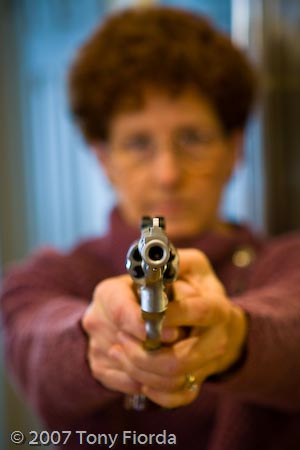Everyone wants to capture photos of their vacation in order to remember what they did, where they went, and what they saw. But most people just take snapshots. Hopefully after reading both parts of this subject, you’ll have gained a few more skills in order create better images, ones that really capture the emotion and action of the locations you visited. Because this subject contains a lot to think about all at once, I’ve broken it in to two parts so that you can take some time and practice the concepts we will talk about.
- Which Camera?
One of the most common questions I hear is “Which camera should I use to take better pictures?” Well, I can tell you that it’s not necessarily the camera, but the person behind it that will capture the better pictures. The camera is only a tool, and today just about any camera from a point and shoot to a professional single lens reflex camera will allow you to capture great images. It’s all in how you use that tool and the techniques you follow when capturing the photos. Some of those techniques are contained in the Rules of Composition and we’ll talk about a few of them here in Part 1:
Have a Subject
Fill the Frame
Rule of Thirds
Fill the Frame
Rule of Thirds
But here’s a very good tip about whatever camera you use: Learn how to use your camera BEFORE leaving on vacation! If you go out and buy a camera the day prior to going to Europe, you won’t be able to use it to your fullest extent because you won’t know how to use the tool (camera) that is in your hand. This of course entails that little known three letter acronym, RTM, which means Read The Manual! Get the camera in enough time to learn how to take an image, view it, delete it if necessary, prevent it from being overwritten, and most importantly how to transfer the image from your camera to your computer or just print it from the camera if that’s what you wish to do.
You might also want to purchase more than one memory card for your camera. There is a school of thought among professionals to not buy the biggest card available, because it if goes bad or get lost or stolen, you’ve lost every one of your photos. Imagine that happening on the way home after you’ve taken hundreds of pictures on your vacation! Not a very pleasant idea.
- Have a Subject
With many photos I’ve seen, I’ve had a difficult time determining what the subject of that photo is. Make sure that whatever you are shooting has a definitive subject so that the viewer won’t have problems determining what it is. Like this image:

I’d bet a paycheck that you know what the subject is, and have figured out that whomever was on the wrong end of that weapon is going to have a bad day! With this photo, I’ve used another Rule of Composition to help define the subject. It is called selective focus and being able to control that with the camera may depend on your camera.
- Fill the Frame
Make sure you fill the frame with your subject. Too much space around your subject can take the viewer away from the intended focus of the image. As you can see with the two images below, both are very nice and would look good on a desk or a wall. The image on the left has a bit of space around the subject and if the background were of an outdoor park you may look away from the subject to see what was back there. But the image on the right fills the frame of the photograph keeping your attention where it should be and really shows off the eyes and the fantastic smile of the subject.


You’ll also notice that the subjects body isn’t directly facing the camera. When taking people portraits, have them turn a little, around 45 degrees to the camera position, to give them a very pleasing thinning effect.
- Rule of Thirds
This is the rule that is broken most often causing great images to be just snap shots. When looking through your viewfinder, imagine two vertical lines about 1/3 and 2/3 of the way from the left of the viewfinder screen as well as two horizontal lines about 1/3 and 2/3 down from the top of the viewfinder screen (see image below). Where these lines intersect is normally where the subject of the photograph should be.

You may say the image of the young lady above doesn’t conform to these lines, but look again. The viewers’ attention on portraits is always drawn to the eyes first and her eyes are essentially on the 1/3 from the top line. You can’t always use one of the intersections and when you can’t, place your subject on one of the other lines and you will still have a great image.
Now look at this image.

The subject, the Biltmore House in Asheville, NC, is placed directly on the Rule of Thirds creating a very pleasing image.
This image also uses another Rule of Compensation called framing. I used the foreground foliage to help frame the house creating an image that could be a calendar shot.
Well now you have some of the most important concepts of rules of photography to use when taking photos. Go out and practice and if you think about just these three rules before pressing that button, you’ll notice better images almost immediately.
Stop back in a week or so, or subscribe to the RSS feed to be notified when Part 2 is posted that talks about:
The Horizon – Where to Place It
Leading Lines
Leave Some Space
Leading Lines
Leave Some Space
Leave a comment if you have questions or other comments. Thanks for stopping by.
